Marketing departments do what they can to try to sell their products as "young" and "fresh", adjectives to which the Honda Jazz it has not been strongly associated since its first generation was created in 2001.
But 19 years and 7.5 million units later, it is enough to say that there is another type of argument that wins over customers: ample interior space, seat functionality, “light” driving and the proverbial reliability of this model (always ranked among the best in the European and North American indices).
Arguments that have been enough for a very relevant commercial career in this truly global city. It is produced in no less than 10 factories in eight different countries, from which it comes out under two different names: Jazz and Fit (in the Americas, China and Japan); and now with a derivation with the suffix Crosstar for a version with “ticks” of crossover, as it should be.
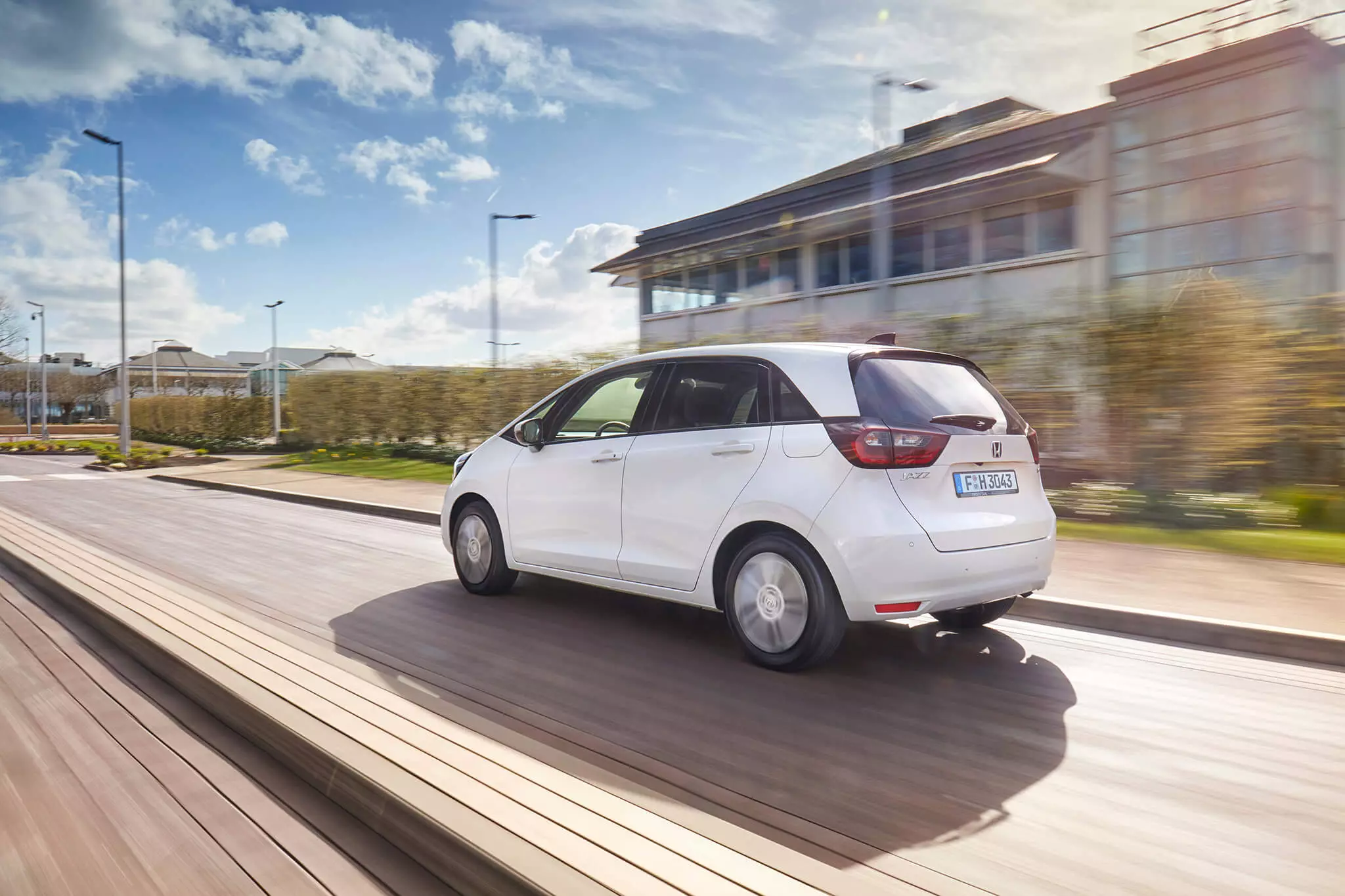
Interior made of contrasts
Even partially surrendering to the crossover law (in the case of the new Crosstar version), what is certain is that the Honda Jazz continues to be an almost unique offer in this segment.
Subscribe to our newsletter
The rivals are essentially five-door hatchbacks (cheap bodywork), which seek to provide as much space as possible within a compact exterior form, but some of them, like the Ford Fiesta, Volkswagen Polo or Peugeot 208, also want to seduce customers with very competent dynamics, even fun. This is not the case with Jazz, which, improving at various points in this Generation IV, remains faithful to its principles.
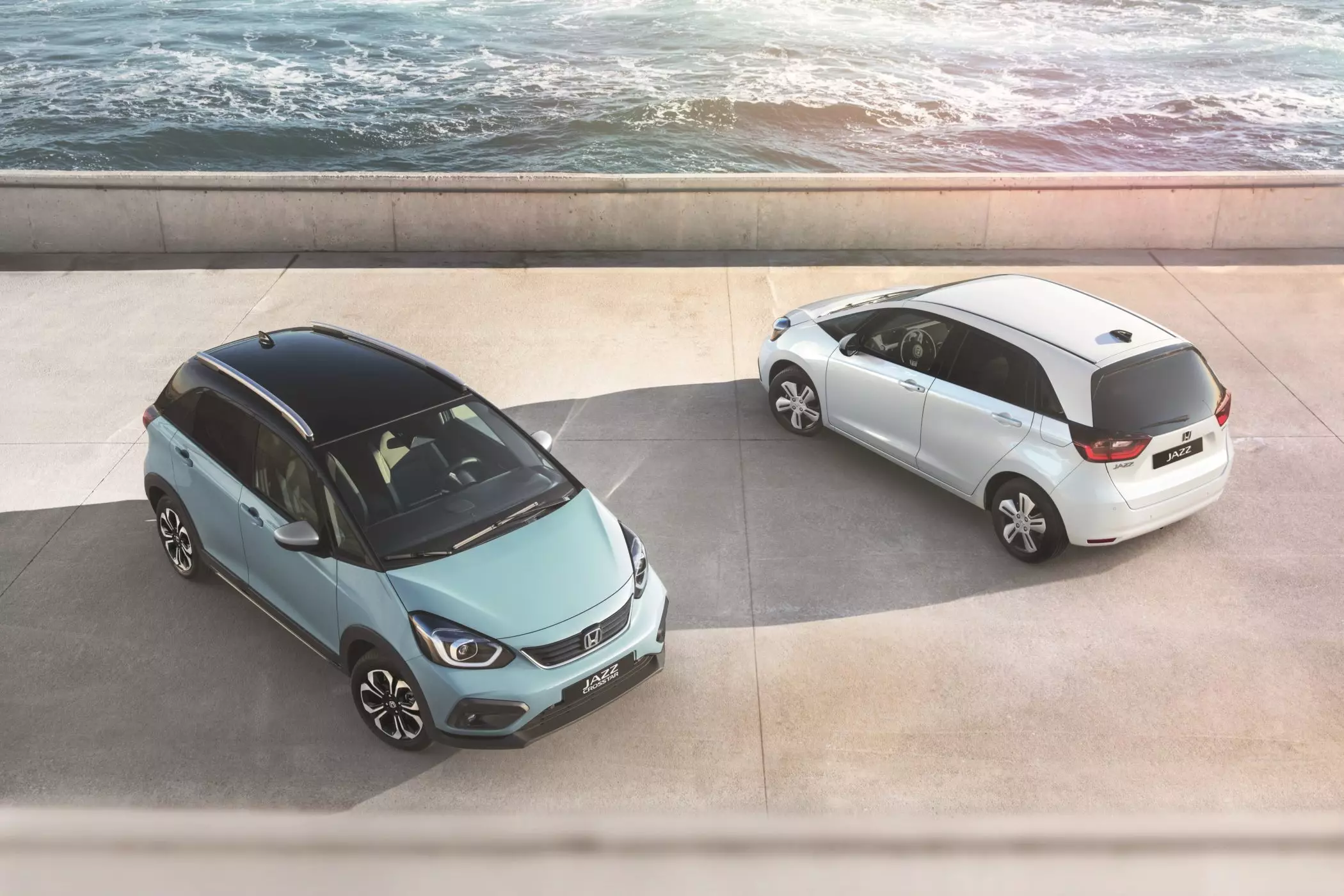
Which? Compact MPV silhouette (proportions were maintained, having gained an additional 1.6 cm in length, 1 cm less in height and the same width); champion interior in rear legroom, where the seats can be folded down to create a completely flat cargo floor or even upright (as in movie theaters) to create a huge cargo bay and, above all, a lot high (you can even transport some washing machines…).
The secret, which continues to be one of the main assets of the Jazz, is the advancement of the gas tank under the front seats, which thus frees up the entire area under the feet of the rear passengers. Access to this second row is also among its trump cards, as not only are the doors large, but also their opening angle is wide.
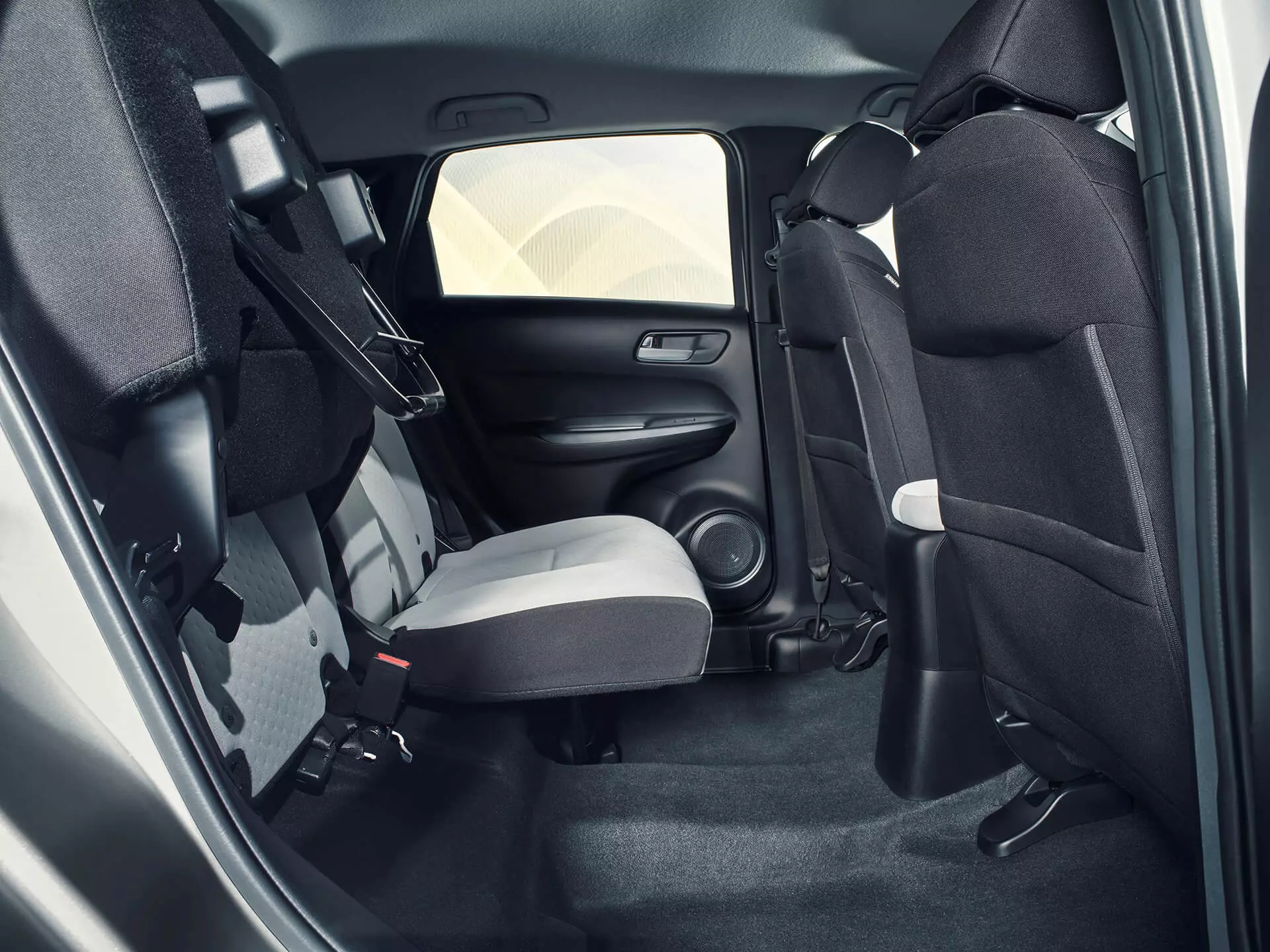
Criticism goes to the width and volume of the trunk (with the rear seats raised) which is only 304 liters, marginally less than in the previous Jazz (less 6 liters), but much smaller (less 56 liters). ) than in the non-hybrid versions of the predecessor — the battery under the floor of the suitcase steals space, and now only exists as a hybrid.
Finally, also a criticism for the width of the cabin, where wanting to seat more than two passengers in the back is clearly not a good idea (it's the worst in the class).
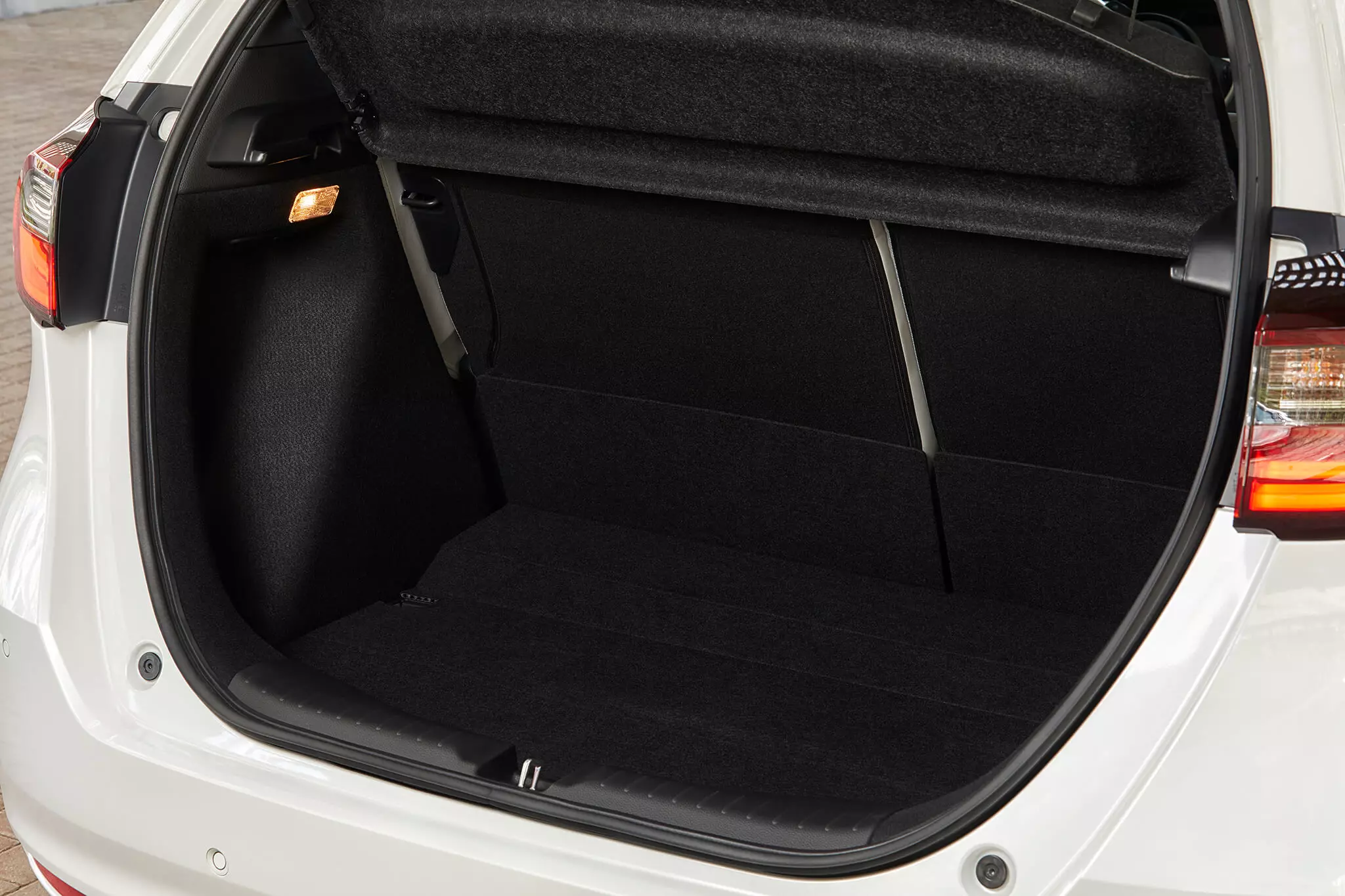
The driving position (and all seats) is higher than that of typical hatchback rivals, although Honda has brought their lowest position closer to the ground (by 1.4 cm). The seats have seen their reinforced upholstery and the seats are wider and the driver enjoys better visibility because the front pillars are narrower (from 11.6 cm to 5.5 cm) and the wiper blades are now be hidden (when they are not acting).
Tetris intersects with Fortnite?
The dashboard is inspired by the imminent electric Honda E, completely flat, and even the two-spoke steering wheel itself (which allows for wider adjustments and has a two-degree more vertical position) is given away by the long-awaited urban mini.
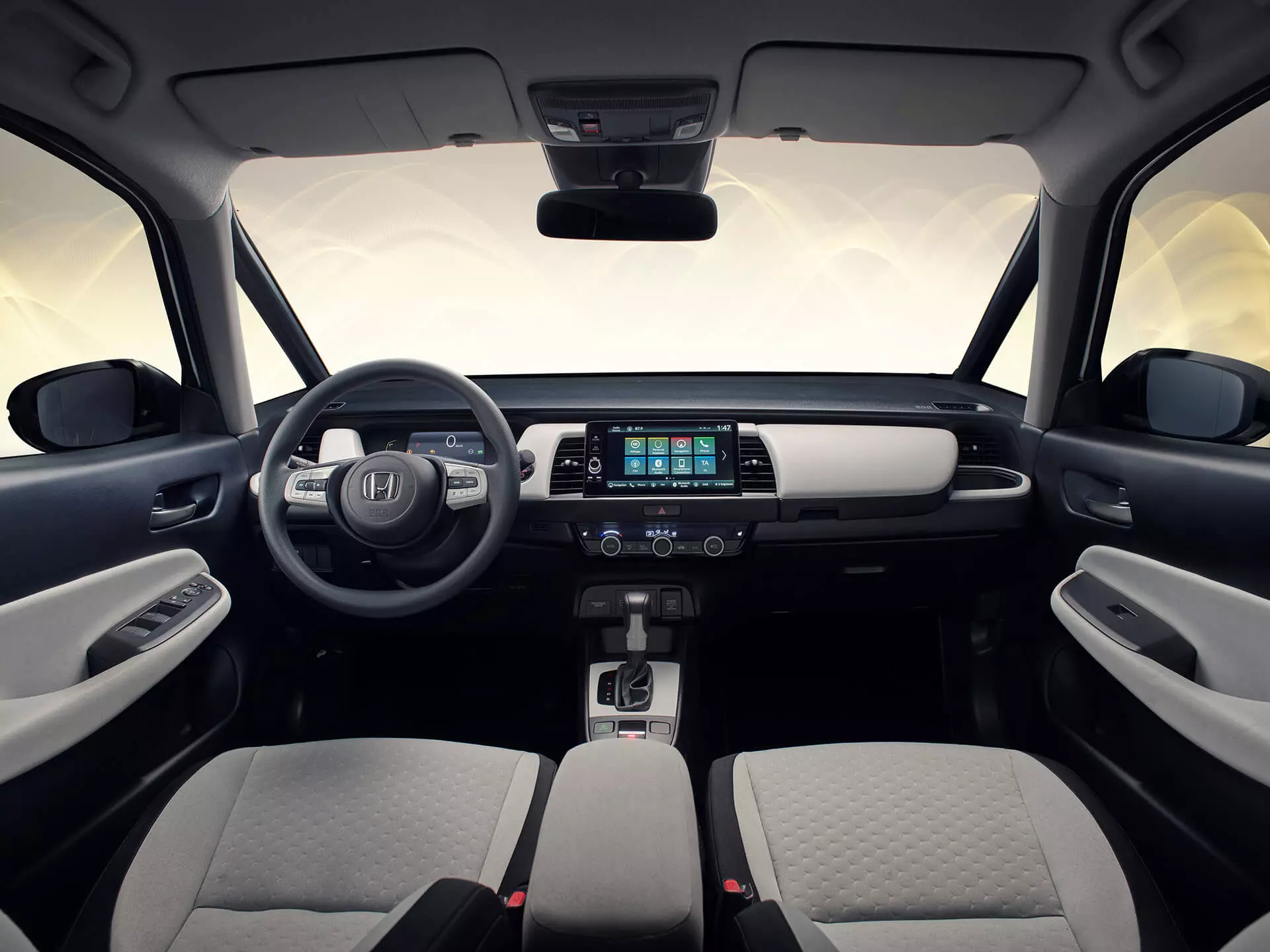
The entry versions have a small central screen (5"), but from then on, they all have the new Honda Connect multimedia system, with a 9" screen, much more functional and intuitive (which, let's face it, isn't difficult…) than usual in this Japanese brand.
Wi-Fi connection, compatibility (wireless) with Apple CarPlay or Android Auto (currently by cable), voice command and large icons for ease of use. There is one or another command with possible improvement: it is complicated to turn off the lane maintenance system and the luminosity rheostat is too big. But there is no doubt that it was an important step in the right direction.
The instrumentation is in charge of an equally colored and digital screen, but with a graphics that could have come from a 90s console game — Tetris crosses with Fortnite?.
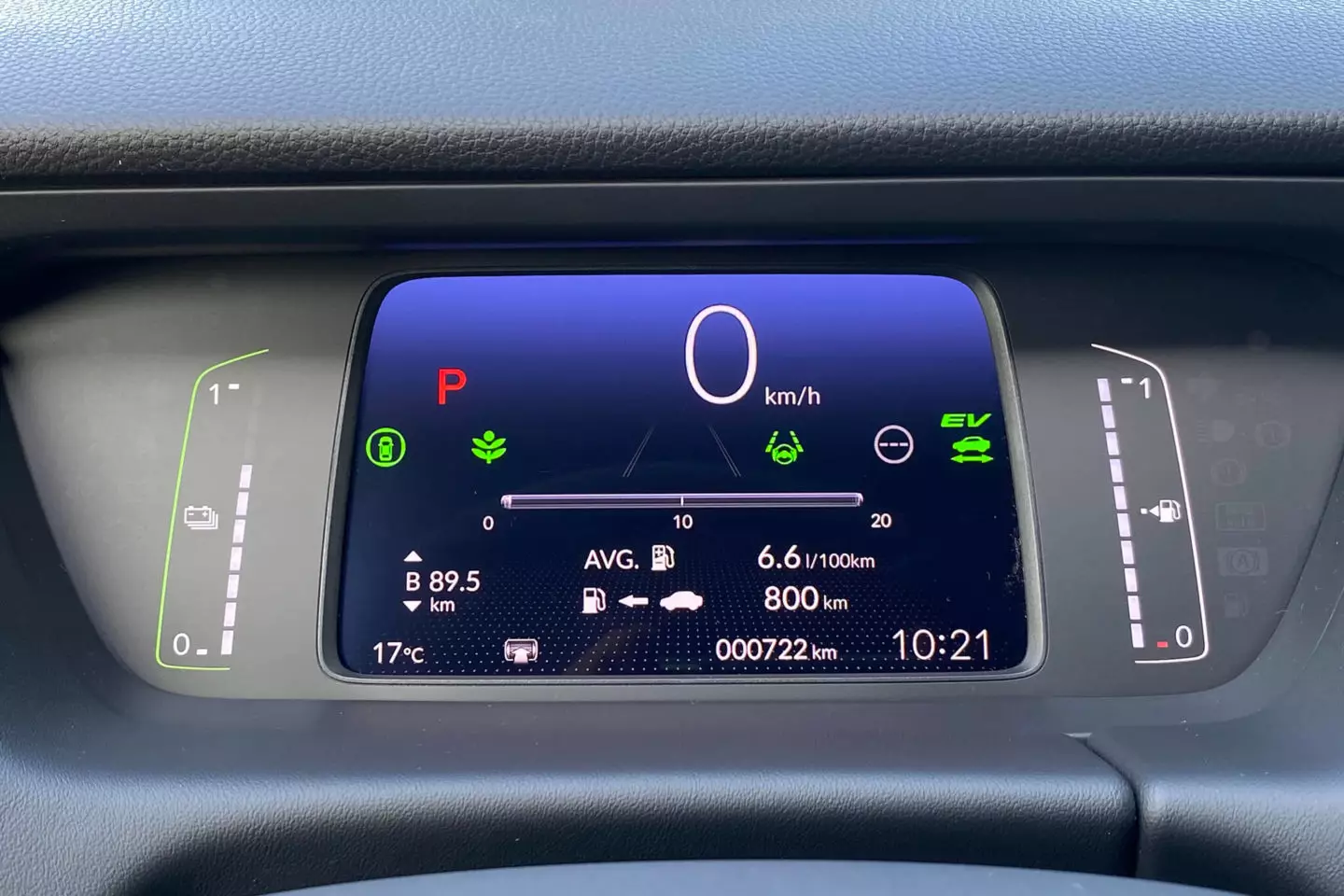
There is, on the other hand, more overall quality than in the previous Jazz, in the assembly and in some coatings, but most of the hard-touch plastic surfaces remain, far from the best that exists in this class and even with much lower prices.
hybrid only hybrid
As I mentioned before, the new Honda Jazz only exists as a hybrid (non-rechargeable) and is an application of the system that Honda debuted in the CR-V, reduced to scale. Here we have a four-cylinder, 1.5 l gasoline engine with 98 hp and 131 Nm that runs on the Atkinson cycle (more efficient) and with a much higher compression ratio than normal of 13.5:1, midway through path between 9:1 to 11:1 for Otto cycle gasoline engines and 15:1 to 18:1 for Diesel engines.
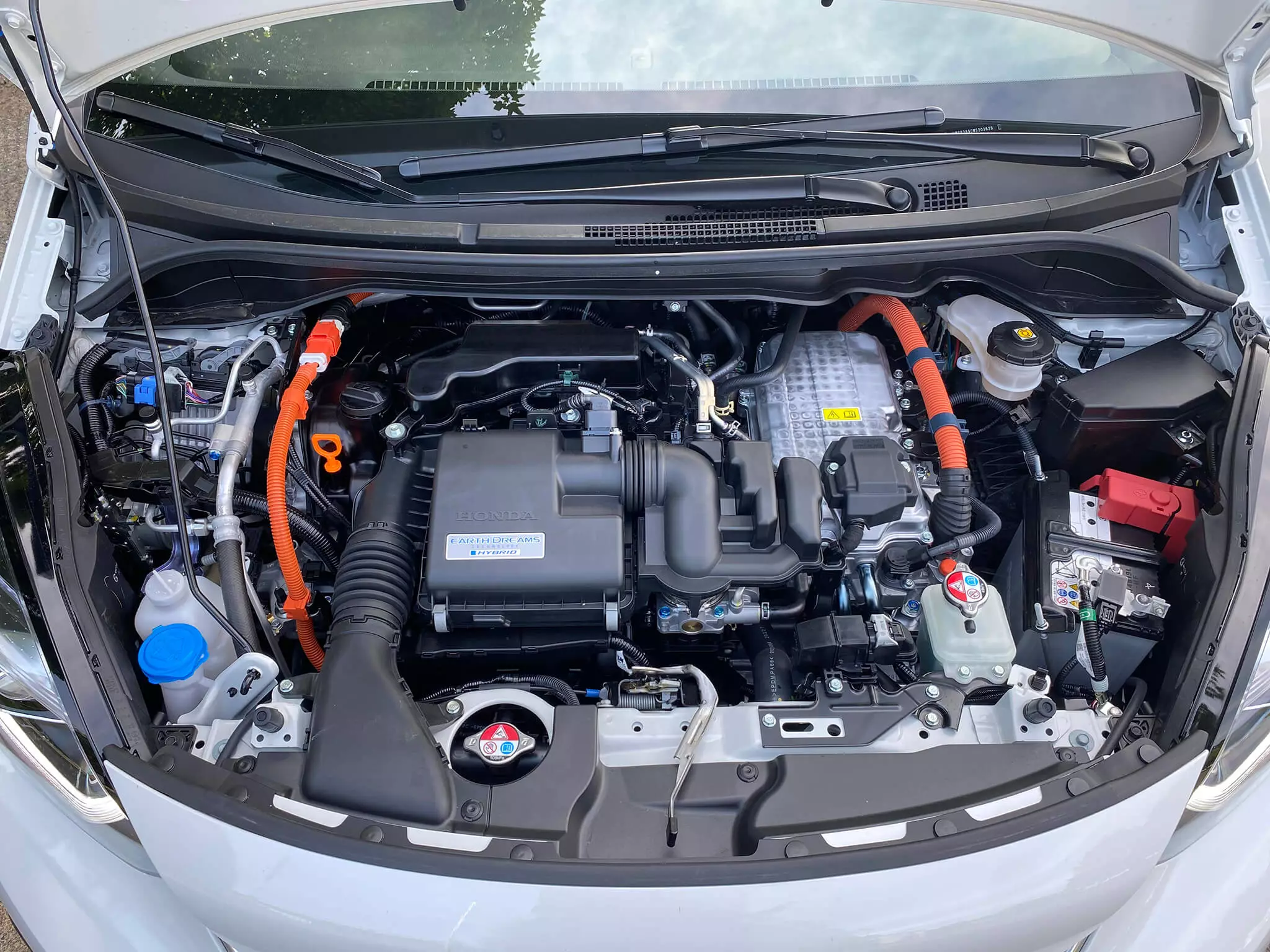
An electric motor of 109 hp and 235 Nm and a second motor-generator, and a small lithium-ion battery (less than 1 kWh) ensure the three operating modes that the system's “brain” intersperses with according to driving conditions and battery charge.
three driving modes
The first is the EV Drive (100% electric) where the Honda Jazz e:HEV starts and runs at low speeds and throttle load (the battery supplies power to the electric motor and the gasoline engine is off).
The way hybrid drive it summons the gasoline engine, not to move the wheels, but to charge the generator that transforms the energy to send to the electric motor (and, if left over, goes to the battery as well).
Finally, in mode engine drive — for driving on fast lanes and greater dynamic demands — a clutch allows you to link the gasoline engine directly to the wheels via a fixed gear ratio (such as a single-speed gearbox), which allows you to forego a planetary gear transmission ( as in other hybrids).
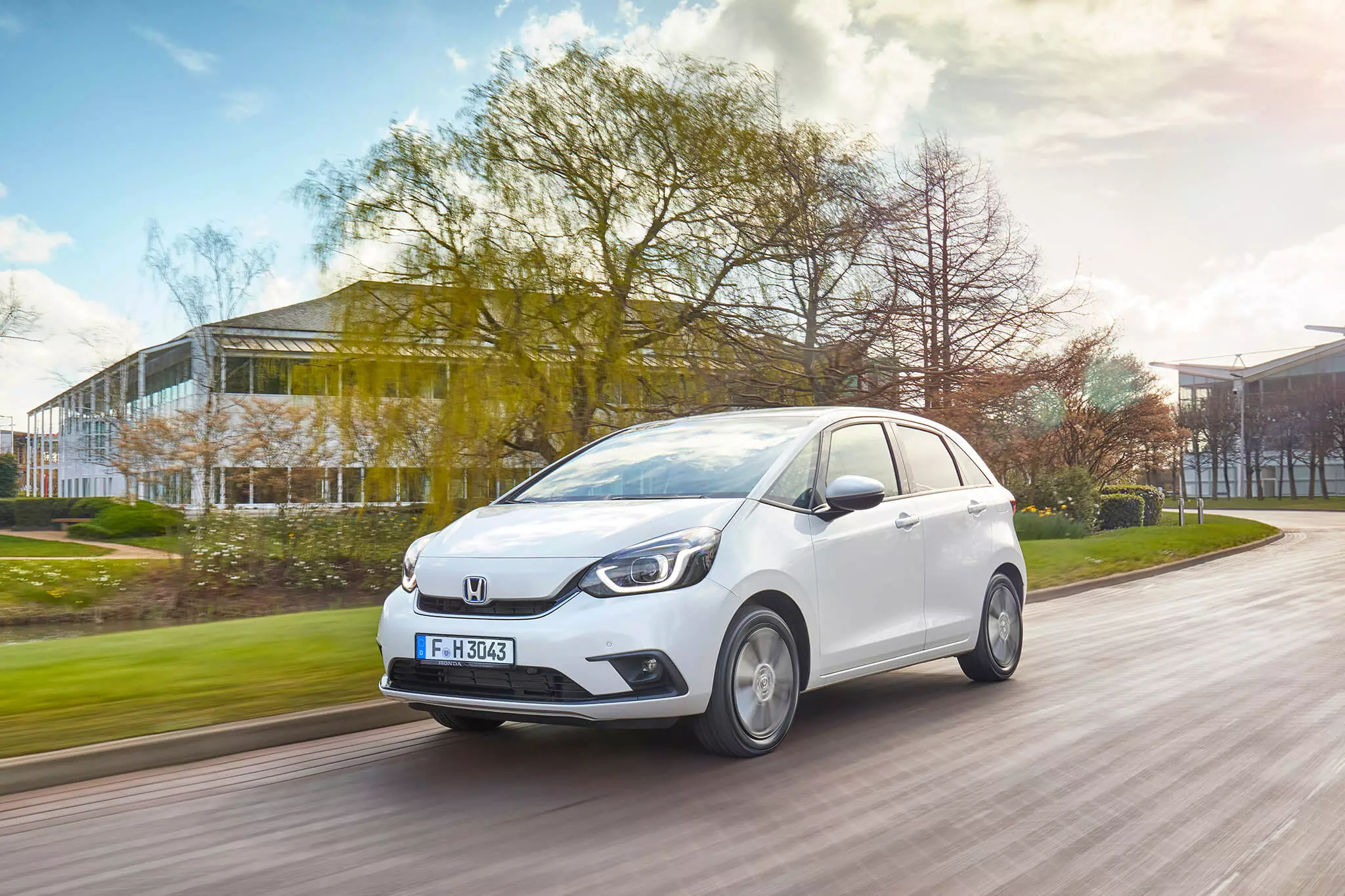
In cases of greater demand on the part of the driver, there is an electric push (“boost”) that is particularly appreciated during speed resumptions and which is noticed very well, for example, when the battery is empty and this electrical assistance does not occur. The difference is between good and mediocre recovery levels — after all, it is an atmospheric gasoline engine that only “gives” 131 Nm — with almost two seconds of difference in acceleration from 60 to 100 km/h, for example.
When we are in Engine Drive mode and we abuse the acceleration, the engine noise becomes too audible, making it clear that the four cylinders are “in effort”. Acceleration from 0 to 100 km/h in 9.4s and 175 km/h of top speed mean that the Jazz e:HEV achieves average performances, with no reason for enthusiastic applause.
About this transmission, which Japanese engineers call the e-CVT, it should be noted that it manages to generate greater parallelism between the rotation speed of the engine and the vehicle (a defect of traditional continuous variation boxes, with the well-known elastic band effect, where there is too much noise from engine revs and no response match). Which, together with the “imitation” of steps, as if it were changes to a common automatic teller machine, ends up resulting in a much more pleasant use, even if there is still room for improvement.
Platform maintained but improved
On the chassis (front suspension McPherson and rear suspension with torsion axle) some changes were made to the platform that is inherited from the previous Jazz, namely with the new aluminum structure in the uprights of the rear shock absorbers, in addition to adjustments in the springs, bushings and stabilizer.
The increase in rigidity (flexional and torsional) without increasing weight was due to the exponential increase in the use of high rigidity steels (80% more) and this is also seen in the integrity of the bodywork in curves and when passing through bad floors.
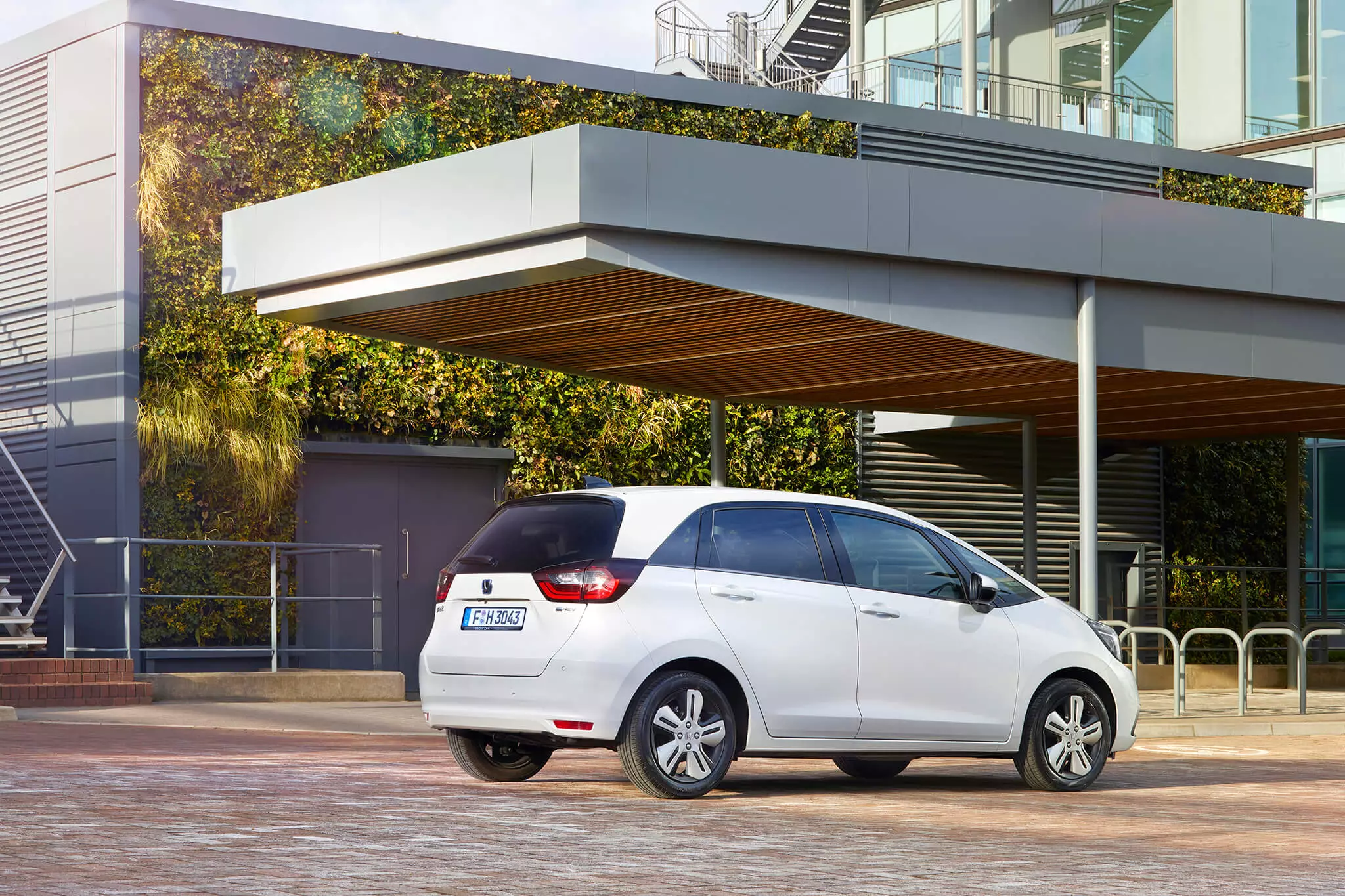
In a good plan, in this aspect, but less so because it shows excessive lateral leaning of the bodywork if we decided to adopt faster paces in roundabouts or succession of curves. It is noticed that comfort prevails over stability (the proportions of the bodywork also affect), in addition to passing through holes or sudden elevations in the asphalt feel and hear more than desirable. Here and there there is one or another loss of motricity, which also happens due to the high maximum torque, even more so being electric, that is, delivered in a seated position.
The brakes showed good sensitivity close to the stopping point (which is not always the case in hybrids), but the braking power was not entirely convincing. The steering, now with variable gearbox, allows you to feel more of the road, not just pointing the wheels in the desired direction, but always very light, within the general philosophy of smooth and effortless driving.
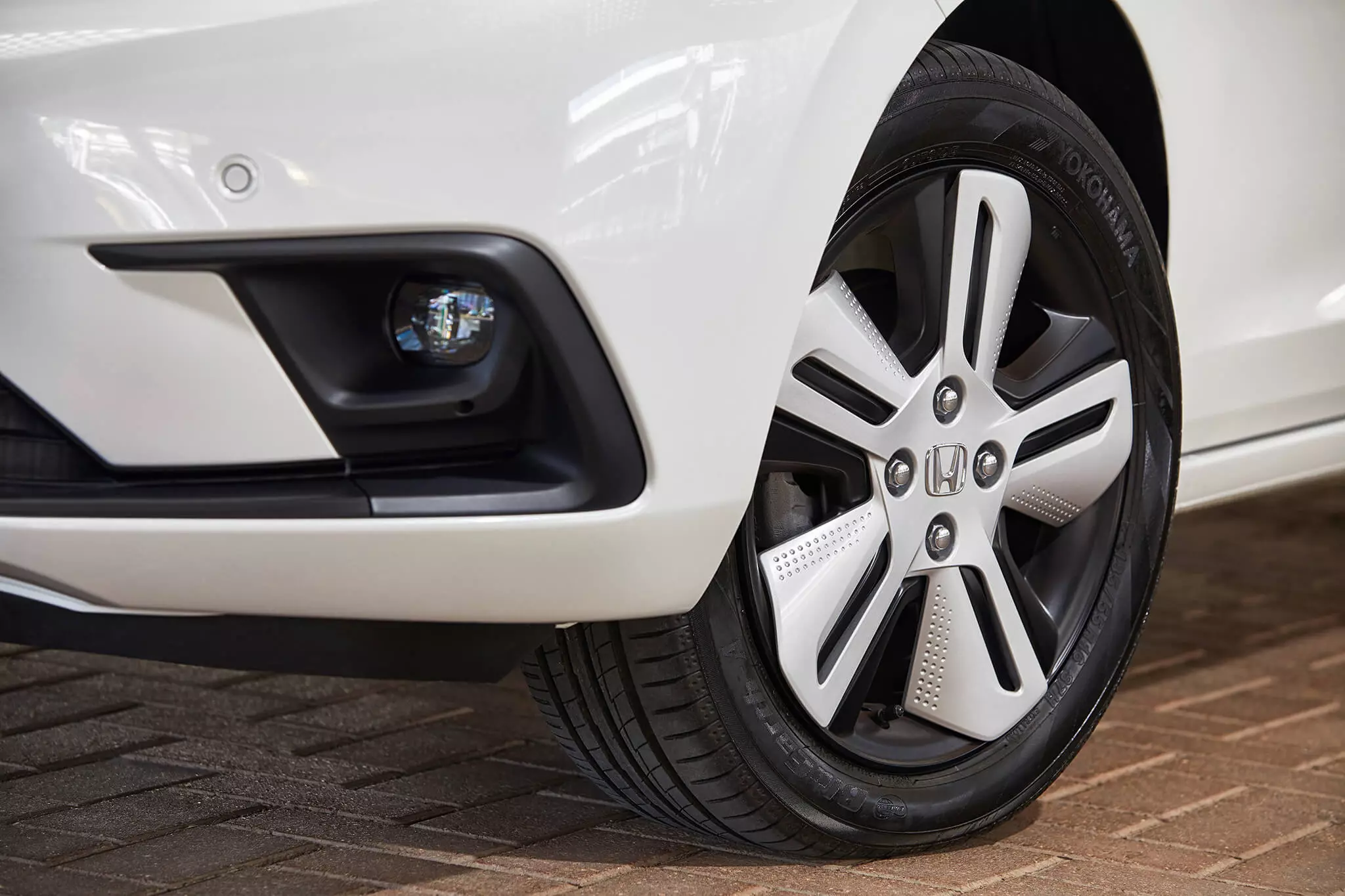
In the test path, which combined national roads and highways, this Honda Jazz initialed an average of 5.7 l/100 km, which is a very acceptable value, even if higher than the homologation record (of 4.5 liters, even thus superior to the hybrid versions of the Renault Clio and Toyota Yaris).
On the other hand, the price of this hybrid, which will arrive in Portugal in September, will be less celebrated by potential interested parties — we estimate an entry price of around 25 thousand euros (hybrid technology is not the most affordable) —, which Honda would like to see from a younger-than-usual age group, although the car's philosophy doesn't do much for that aspiration to materialize.
Crosstar with crossover “ticks”
Eager to captivate younger drivers, Honda moved to a differentiated version of the Honda Jazz, with a look influenced by the crossover world, superior ground clearance and an improved interior.
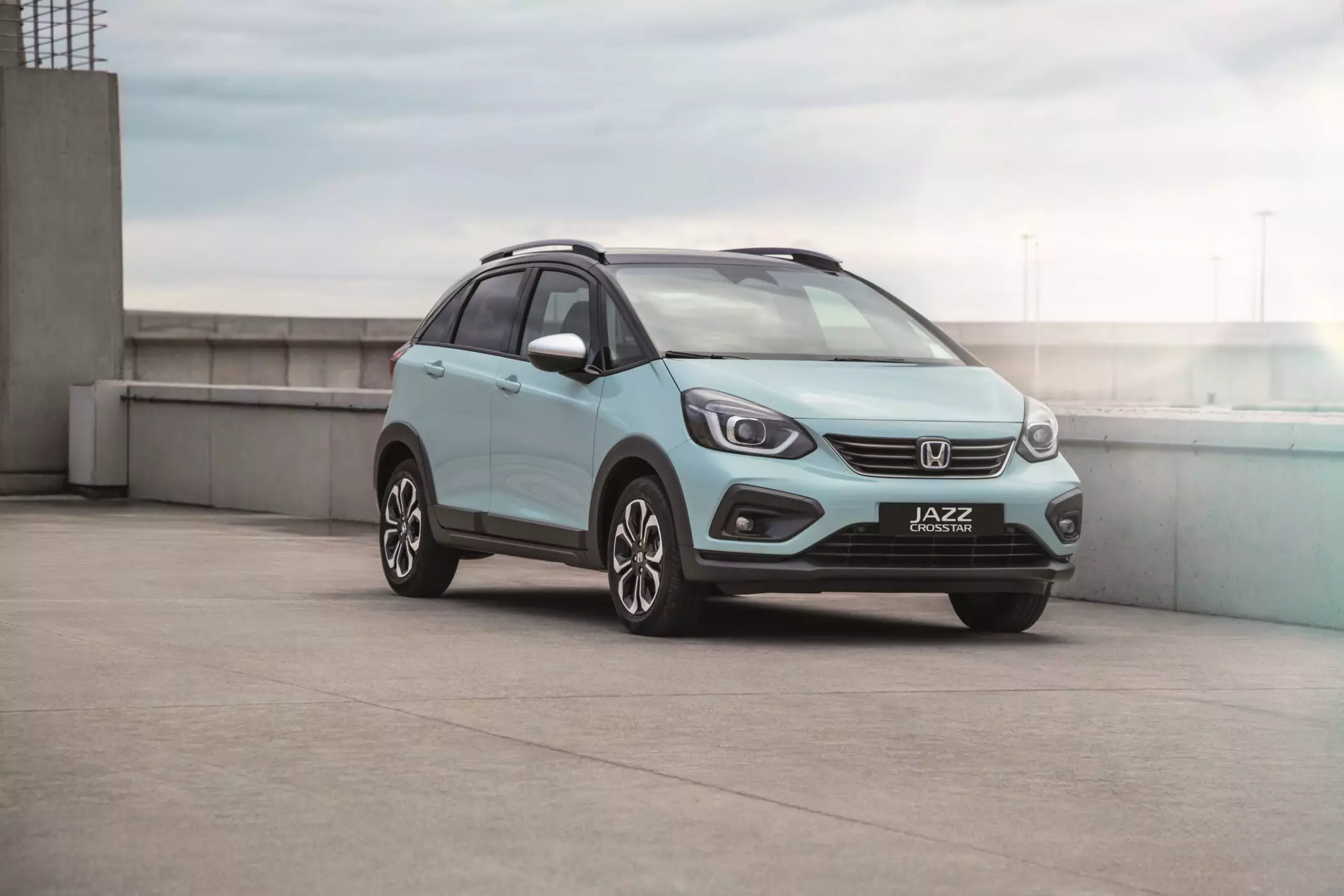
Let's do it by steps. On the outside we have a specific grille, roof bars — which can optionally be painted in a different color from the rest of the body — there are black plastic protections on the lower perimeter all around the body, waterproof upholstery linings, a superior sound system (with eight instead of four speakers and also twice the output power) and a higher floor height (152 instead of 136 mm).
It is slightly longer and wider (due to the "small plates") and higher (roof bars...) and also the higher ground height has to do with different equipment (and not due to organic differences), in this case the taller tires profile (60 instead of 55) and the larger diameter rim (16' instead of 15”), with a small contribution from the slightly longer suspension springs. This results in a little more comfortable handling and a little less stability when cornering. Physics does not let up.

The Crosstar loses, however, in performance (more than 0.4 s from 0 to 100 km/h and less than 2 km/h of speed, in addition to disadvantages in recoveries due to superior weight and less favorable aerodynamics) and in consumption (because of the same reasons). It also has a very slightly smaller luggage compartment (298 instead of 304 litres) and will be about 5000 euros more expensive — an excessive difference.
Technical specifications
| Honda Jazz e:HEV | |
|---|---|
| combustion engine | |
| Architecture | 4 cylinders in line |
| Distribution | 2 ac/c./16 valves |
| Food | Injury direct |
| Compression ratio | 13.5:1 |
| Capacity | 1498 cm3 |
| power | 98 hp between 5500-6400 rpm |
| Binary | 131 Nm between 4500-5000 rpm |
| electric motor | |
| power | 109 hp |
| Binary | 253 Nm |
| Drums | |
| Chemistry | Lithium Ions |
| Capacity | Less than 1 kWh |
| Streaming | |
| Traction | Forward |
| Gear box | Gearbox (one speed) |
| Chassis | |
| Suspension | FR: Regardless of MacPherson type; TR: Semi-rigid (torsion axis) |
| brakes | FR: Ventilated discs; TR: Disks |
| Direction | electrical assistance |
| Number of turns of the steering wheel | 2.51 |
| turning diameter | 10.1 m |
| Dimensions and Capabilities | |
| Comp. x Width x Alt. | 4044mm x 1694mm x 1526mm |
| Length between the axis | 2517 mm |
| suitcase capacity | 304-1205 l |
| warehouse capacity | 40 l |
| Weight | 1228-1246 kg |
| Provisions and consumption | |
| Maximum speed | 175 km/h |
| 0-100 km/h | 9,4s |
| mixed consumption | 4.5 l/100 km |
| CO2 emissions | 102 g/km |
Authors: Joaquim Oliveira/Press-Inform.
